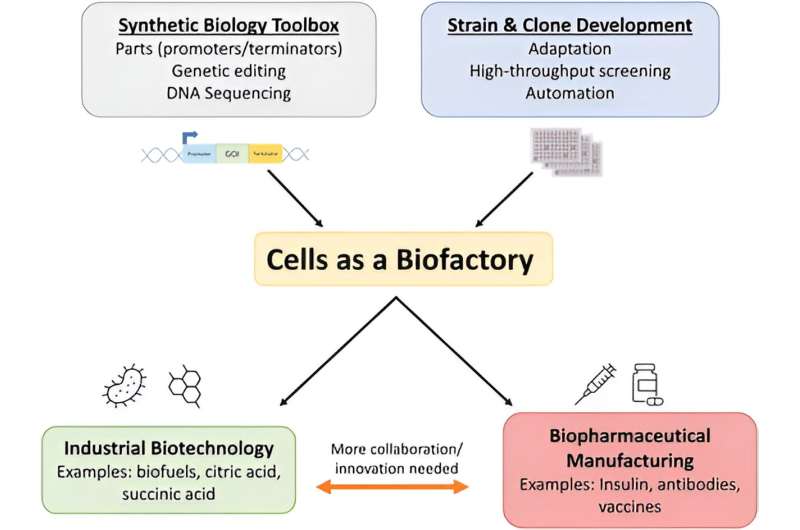This article has been reviewed according to Science X's editorial process and policies. Editors have highlighted the following attributes while ensuring the content's credibility:
fact-checked
trusted source
proofread
Advancing technologies for using cells as biofactories

A new comprehensive review published in Industrial Biotechnology examines how industrial biotechnology and biopharmaceutical manufacturing utilize the same framework for efficient biochemical production, which can be leveraged in current and future collaborations to enable rapid innovation.
In the article titled "Cells as Biofactories: Parallels Between Biopharmaceutical Manufacturing and Industrial Biotechnology," Lauren Cordova and Kelvin Lee, from the University of Delaware, describe advances in synthetic biology, genetic engineering, including CRISPR and sequencing technologies, and strain/clone development, and high-throughput screening, that have contributed to rapid progress in new product development and innovation in both biopharmaceutical manufacturing and industrial biotechnology.
The authors discuss mechanisms for cross-disciplinary innovation and point to consortia groups that have been created to promote and further develop technology.
"With additional collaboration through these groups and new partnerships, future innovation can bridge industrial biotechnology and biopharmaceutical manufacturing to more rapidly engineer cells as efficient biofactories," state the authors.
"Cordova and Lee raise important points about the commonalities of tools and techniques that are used in industrial biotechnology and biopharmaceutical manufacturing. Indeed, scientific and engineering communities engaged in these activities are highly fragmented. This is revealed by specialized sessions at meetings and identification of scientists/engineers as working in either industrial biotechnology or biopharmaceutical manufacturing" says Editor-in-Chief Richard A. Gross, Ph.D.
More information:
Lauren Cordova et al, Cells as Biofactories: Parallels Between Biopharmaceutical Manufacturing and Industrial Biotechnology, Industrial Biotechnology (2023). DOI: 10.1089/ind.2023.0009
www.liebertpub.com/doi/10.1089/ind.2023.0009
Provided by Mary Ann Liebert, Inc



















